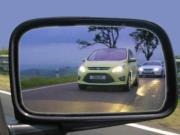I was out on a lesson with a pupil recently and she was driving me mad, indicating for every parked car and stopped bus, all without looking in her mirrors. After we discussed it, it came out that she had been looking at “instructional” videos on the internet and these had told her to indicate every time. This is absolute rubbish, and if what she said was true – if ADIs really are instructing people to signal without thinking – they ought to be taken off the Register of Approved Driving Instructors before they indirectly end up killing someone!

On that same lesson, the pupil also said that she’d been told she only needed to indicate if she “was moving completely into another lane”. That is also totally incorrect.
Pupils can drive you nuts sometimes. You can bang your head against a wall and use every way of explaining something that you can think of, and they’ll still keep doing it wrong. And yet one sniff of a YouTube video or Tweet from a friend who’s just passed their test, and they’ll have a shiny new habit that you’ve got to break them out of!
As an aside on that, I was on a lesson with a guy who worked with one of my recently passed ex-pupils. He’d asked my ex-pupil if he had any advice for the test, and was told “yes, drive slowly”. That same ex-pupil failed his test first time for – you guessed it – driving at 30mph on a NSL dual-carriageway! They’re all experts when they pass!

But anyway. What are the guidelines for indicating when overtaking?
If you’re overtaking a moving vehicle then you should signal to move out (after checking it’s safe, of course). At the very least, the driver you’re overtaking needs to know what your intentions are, as well as those behind you and those coming towards you. Assuming that you’re not cutting anyone up, you don’t need to signal moving back in (but if you do it isn’t the end of the world – just make sure you check that you’re far enough ahead of the vehicle you passed to move in safely).
If you’re overtaking parked vehicles or other obstructions, then you only need to indicate if necessary. You can only decide that by looking around you and assessing the situation, because every one is different.

What does that mean in practice? Well, if you’re on a normal road, driving at a normal speed, with normal traffic following you at a normal distance, and normal traffic doing the same coming towards you, and there’s plenty of space, you don’t normally need to indicate to go past obstructions or parked cars and buses.
However, if you saw that the car behind you was getting closer then you might choose to signal as a reinforcement to your intention to overtake a parked vehicle. An alternative way of dealing with that might be to slow down if it looks like the car behind is going to overtake both you and the obstruction (yes, people can be that stupid). You have to interpret the situation at the time.
Another example. If you had stopped behind a bus or other obstruction to wait for oncoming traffic to pass on a narrower road, as soon as you could see a gap coming you might choose to signal – either for the bus driver (who might be about to pull away) or the waiting cars behind (who might be thinking about overtaking both you and the bus). Again, you’d interpret the situation at the time.
And another example. If you saw a cyclist ahead and knew you were going to have to slow down or deviate to get by, a signal might be useful to drivers behind who may not be able to see the cyclist. Once more, you’d interpret the situation at the time.
You see, that’s the key. If the signal is of use to someone then it is necessary. If it isn’t of use – or is misleading – then it isn’t necessary. Remember that unnecessary signals often are misleading: ask yourself how many times you’ve seen someone signal, you’ve thought that they were going to turn, and they haven’t. That’s why signalling for passing every obstacle is wrong. Signalling for every parked car, bus, cyclist, and road works makes them meaningless. then your signals become meaningless – completely misleading. The people following you wouldn’t know what the hell you were doing if your indicators were going on and off all the time.

Once you’ve passed your test, it’s your choice whether or not you drive like that. But it isn’t the right way. However, if you do it as a learner it could easily affect your chances of passing your test, and this is exactly what my pupil was doing – just mashing the indicator stalk without a thought for other road users.
Learners (and a lot of ADIs) often try to pigeon-hole things as a substitute for understanding them. That’s where silly ideas like roundabout 12 o’clock rule come from. The problem is that there are many things which simply “depend”, and which cannot be conveniently pigeon-holed.
So, in summary, you do not need to signal to go past parked cars and buses unless the signal is necessary. And you have to decide if it’s necessary based on each separate event.